Following part 1 of our trilogy (covering the idea of a pitch bend / mod wheel CV output modification), part 2 and part 3 deal with more general Pro-One upgrades. These include a new keyboard, new knob caps, an expanded CPU and MIDI upgrades that are currently available on the market and that are offered by a wide variety of manufacturers.
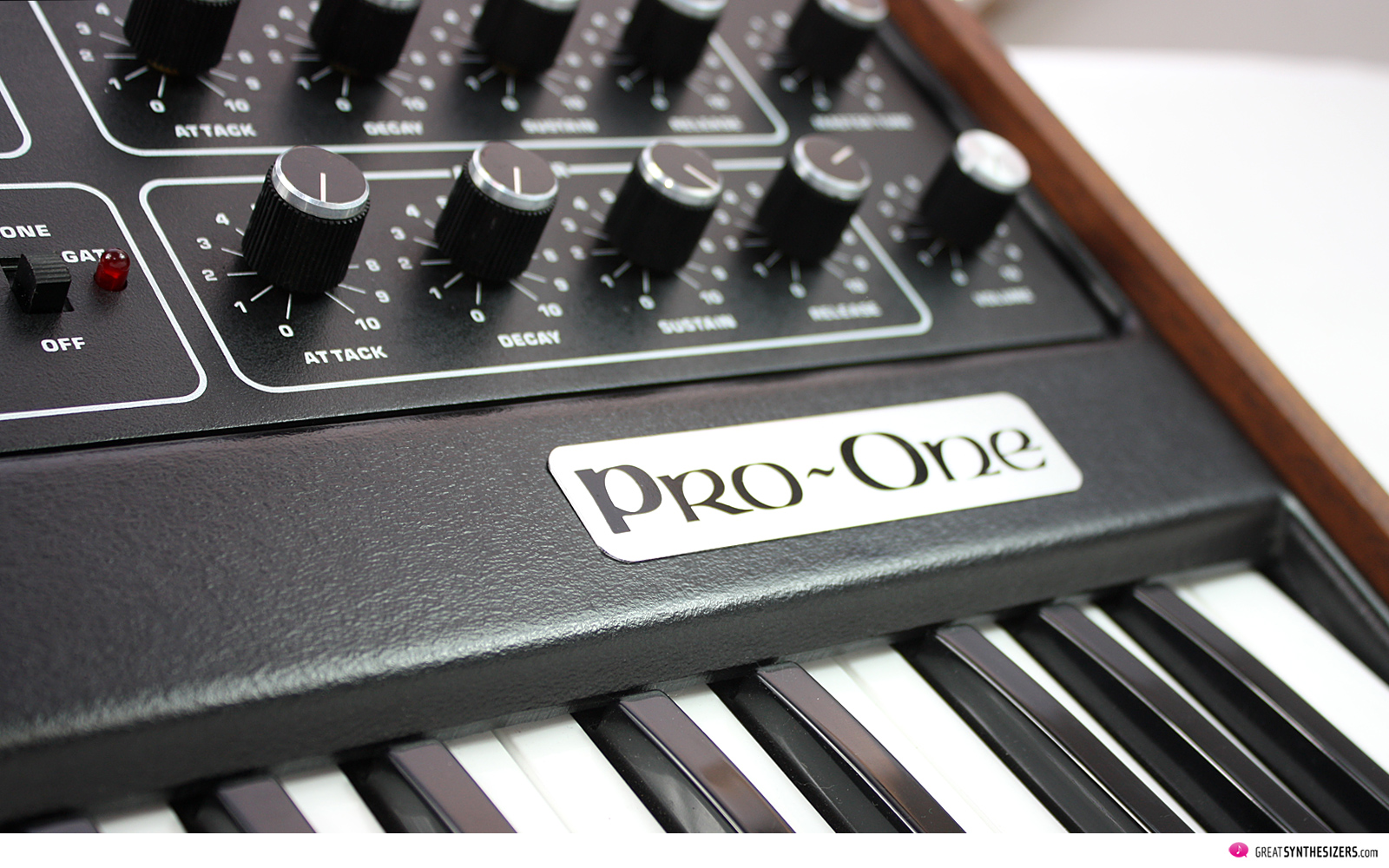
Let’s start at the beginning. As so often with vintage synthesizers, the Pro-One keyboard is a certain weak point. Its construction is relatively primitive (which, admittedly, also has its advantages in terms of service) and houses a “loud mechanism”. Rattlings noises, double / multi trigger effects and other contact problems are not uncommon.
The Sequential Pro-One is not completely free of this. Its Pratt-Read keyboard (early models: J-Wire, later models: membrane switches) is of sufficient quality that it can be used for many decades (occasional maintenance work provided). But, modern keyboardists are used to a significantly different level of quality in terms of playing comfort.
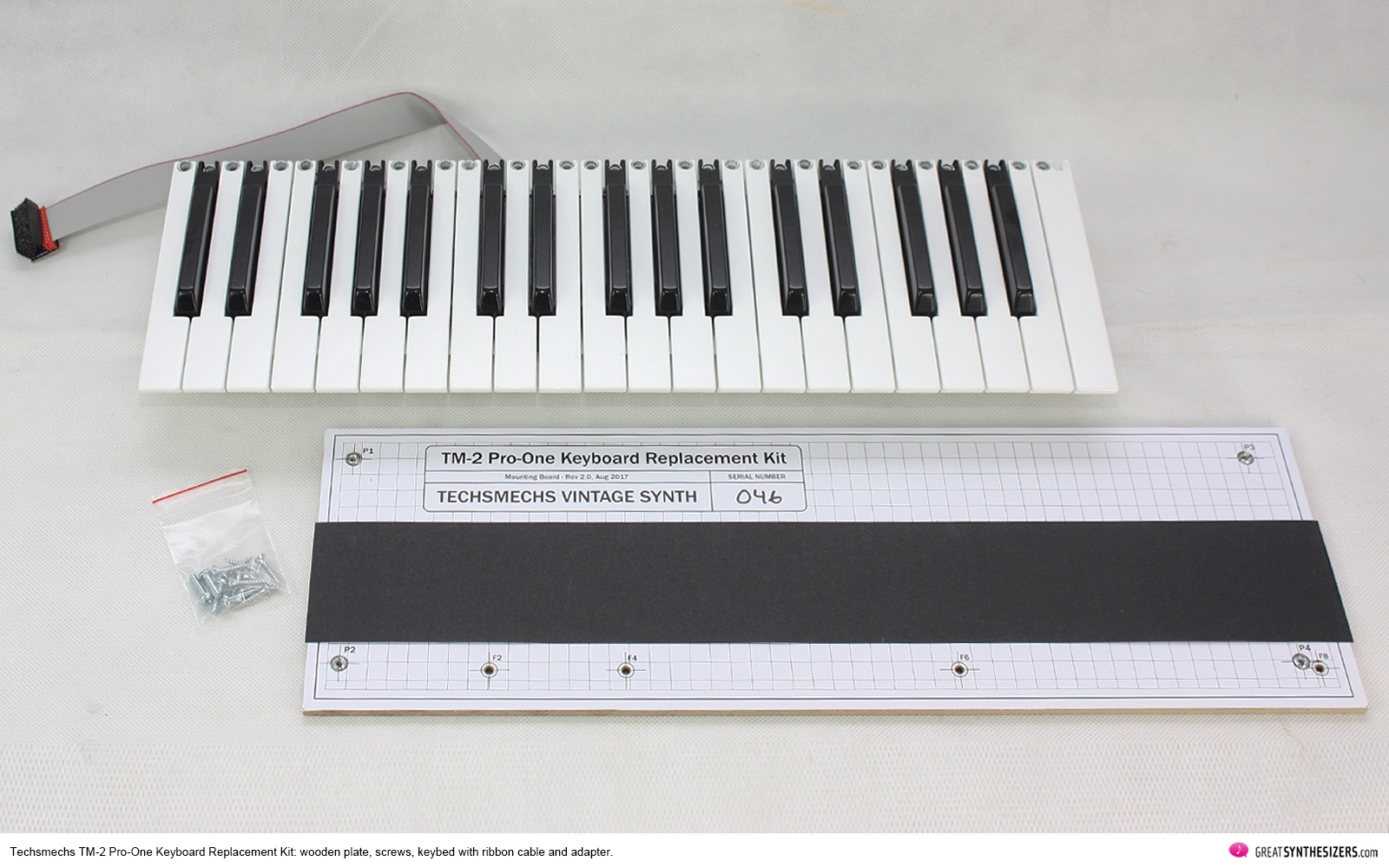
The Swedish company Techsmechs hits the nail right on the head by offering a TM-2 Pro-One Keyboard Replacement Kit, which comes together with a wooden base plate (assuring that the installation height is correct and the new keyboard matches the original base holes), a set of screws and the 3-octave keyboard itself (which is Fatar, we guess). The keyboard is soft to play and works perfectly – goodbye contact problems!
A small adapter is attached to the ribbon cable of the new keyboard, which allows for a simple replacement procedure. Just unplug the old Pratt-Read keyboard and plug in the new TM-2 keyboard. Depending on your Pro-One model, however, you should specify the appropriate keyboard type (J-Wire, membrane switches) when ordering, since the small adapter in question differs accordingly.
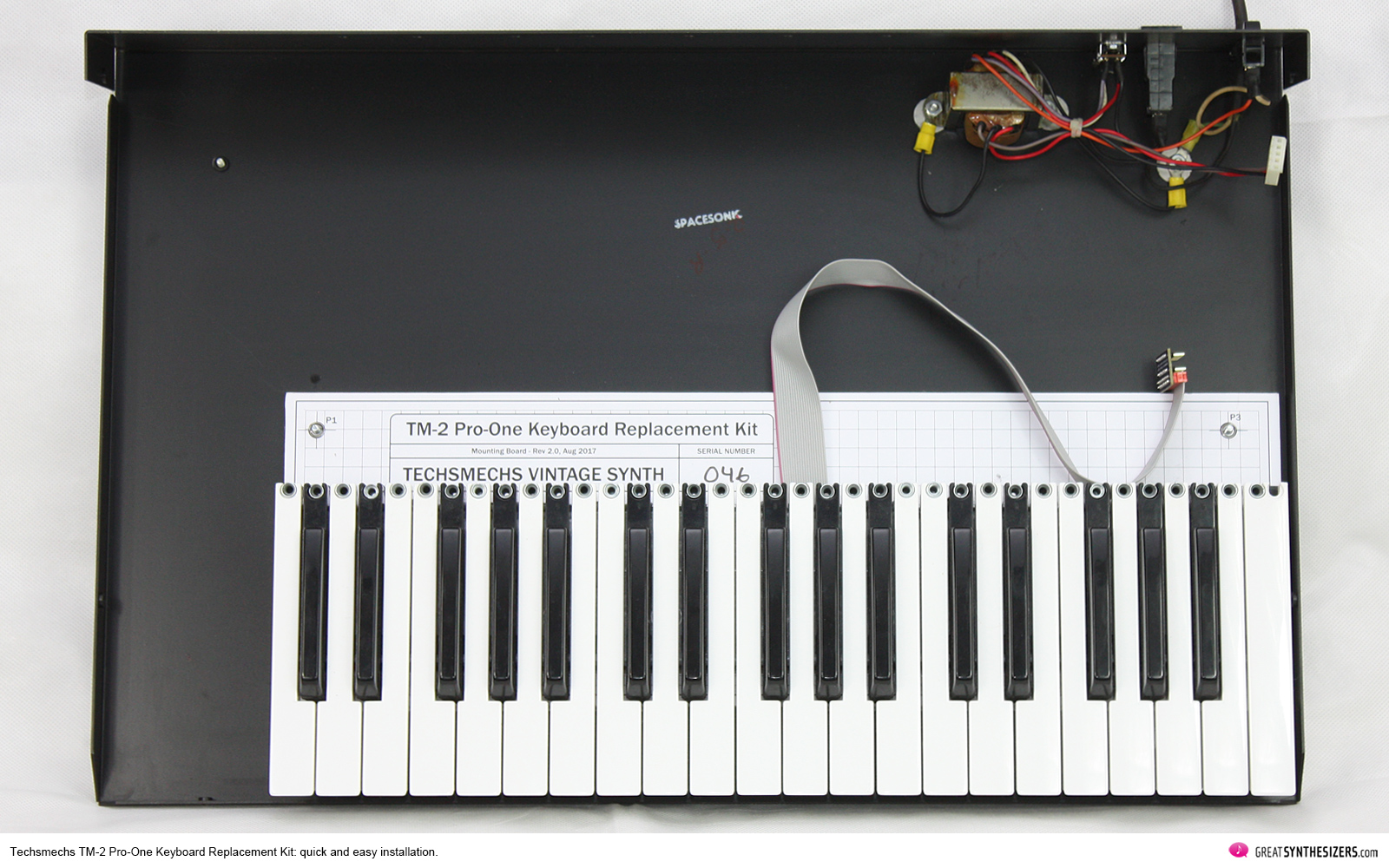
As said, keyboard replacement is quick and easy. A screwdriver is all you need. And when the new TM-2 keyboard is installed, the Pro-One appears unchanged and therefore original – now with a reliable (easy-to-play, not rickety) keyboard.
Small note on the side: If your Pro-One has a SynthWood housing (as seen in part 1 of our trilogy) a TM-2 keyboard can not be installed. The SynthWood case, being closer to the keyboard than the original Sequential plastic case, is two centimeters too narrow for a TM-2 keyboard installation.
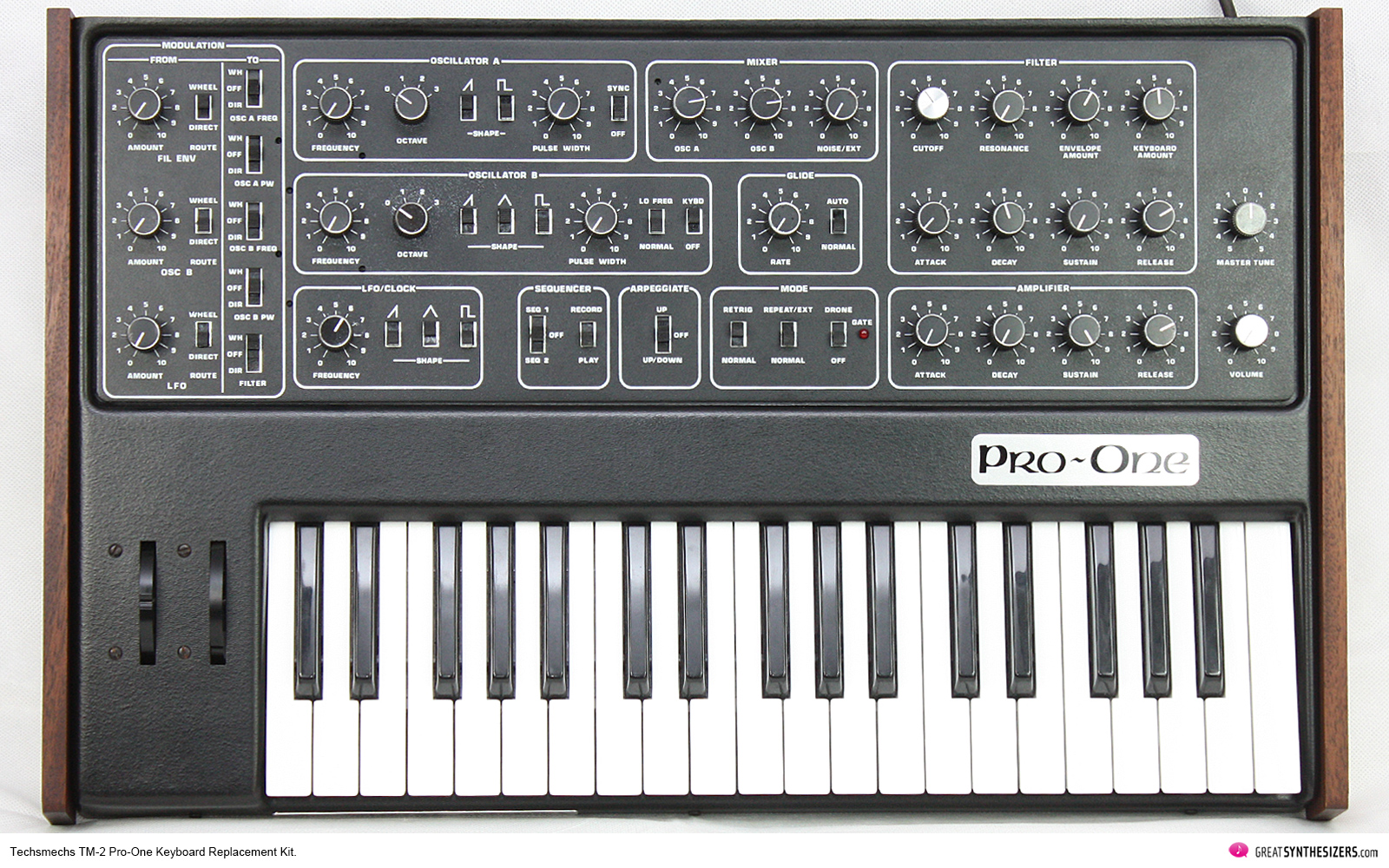
Let’s stay with Techsmechs. The supplier’s portfolio also includes metal caps (knob caps) for the Sequential Pro-One. These were not intended for the original instrument (which was a cheap synthesizer) but were provided for the top models Prophet-5 and Prophet-10.
Nevertheless, a Pro-One with shiny metal caps looks much (!) better than the original version with its pure plastic-look. This TM-1 knob cap upgrade – definitely not expensive! – instantly improves the look of your Sequential Pro-One synthesizer.
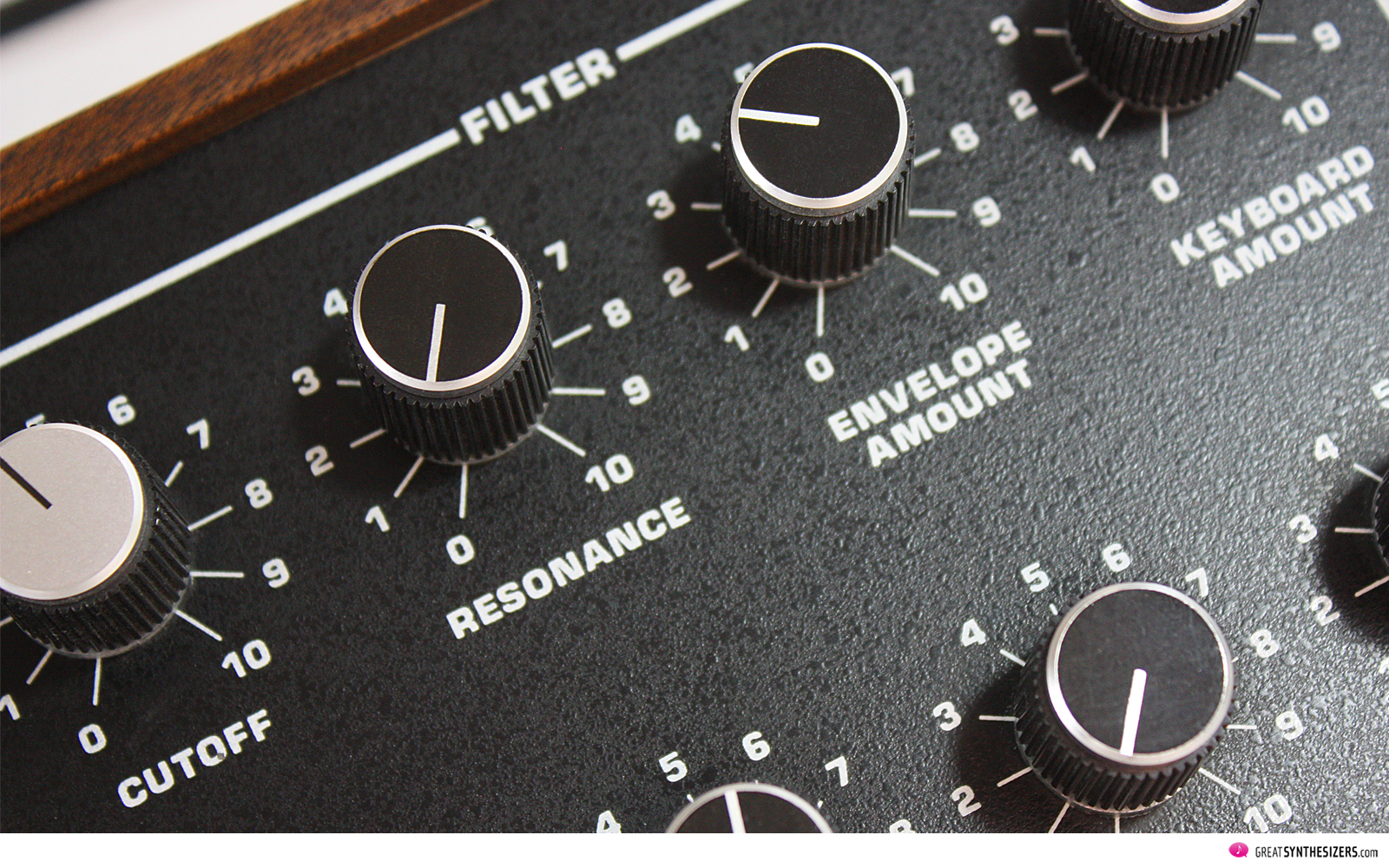
However, when putting the caps on, ensure that the cap and its marker are pressed on at the exactly right place. Having the “0” position somewhere between 0 and 1 (or even in the minus range) would be annoying, of course.
In the end, loosening an incorrectly placed metal cap for optical purposes may – or may not – turn out to be a difficult task. Some caps sit extremely tightly on top of the knob and may be bent unintentionally when loosened again. So try getting this right the first time around.

Techmechs offers this Knob Caps Package (called TM-1) for various Sequential synthesizers: Prophet-5, Prophet-10, Prophet-600 and … Pro-One. There are two types of packages to choose from: sets with black caps only, or sets with black caps and two silver caps (Pro-One: filter / volume, Prophet-5: master tune / volume) or three silver caps (Prophet 10: Master Volume / Balance / Master Tune).
Once the Pro-One knobs shine metallic, you probably will want the silver badges (“Sequential Ciruits” and “Pro-One”) to be of the same “shining” quality. Often scratched or bent, many Pro-One models are – after many decades of use – by no means a feast for modern eyes. However, there are new badges available … e.g. from eBay member analog_u.s.
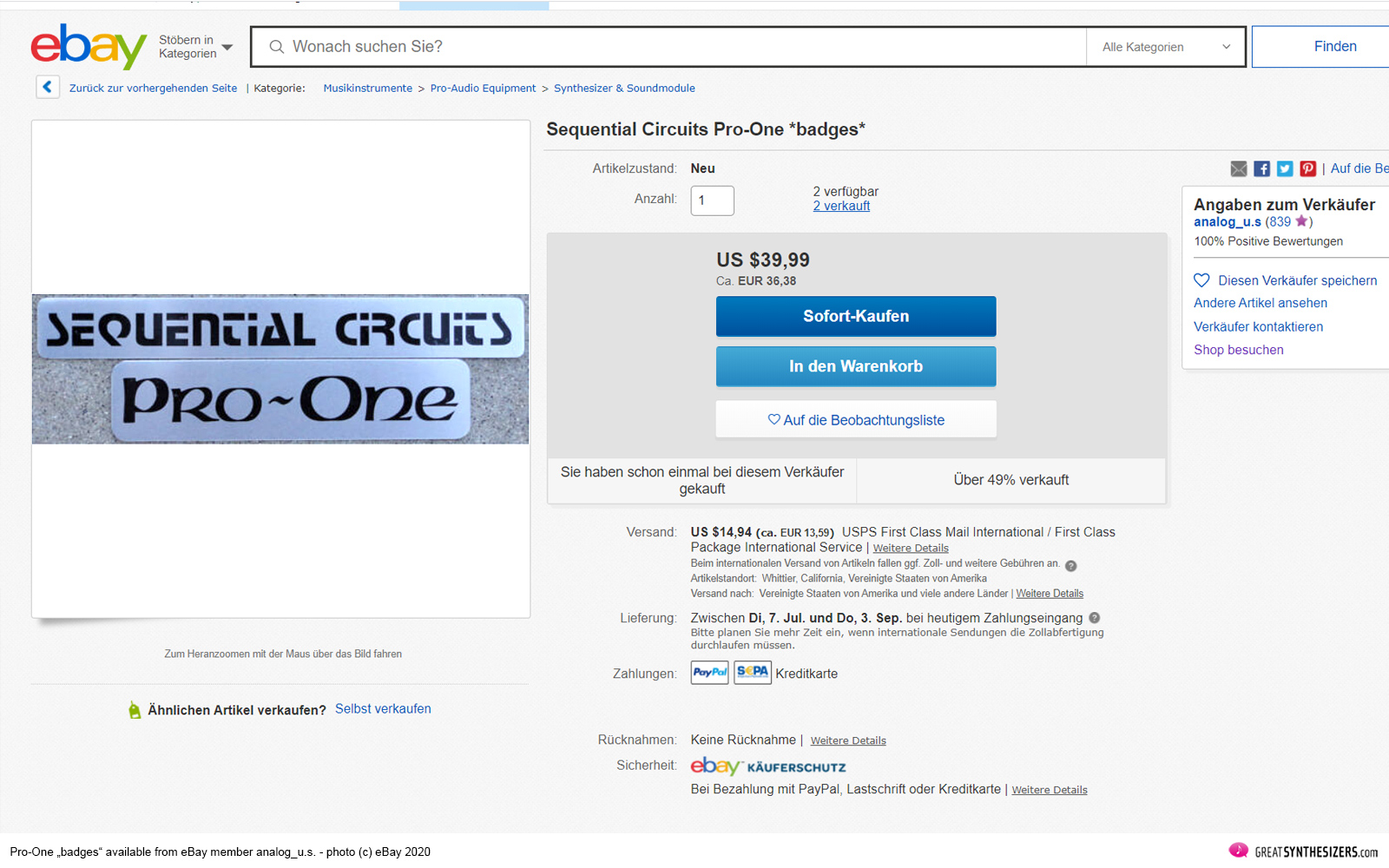
Now that pots and plaques have been offered to the fountain of youth, the wooden side panels could also stand replacement. Admittedly, the original wood is very hard and probably still looks respectable, even after almost 40 years of use. However, those Pro-One side panels are plain and solid, but nothing else.
New side panels, on the other hand, may also be simple wooden elements, but the neatly arranged (now precious) wood improves the overall appearance of the instrument. As with the silver “badges”, you’re likely to find new wooden side panels (Walnut) in the shop of eBay member analog_u.s.
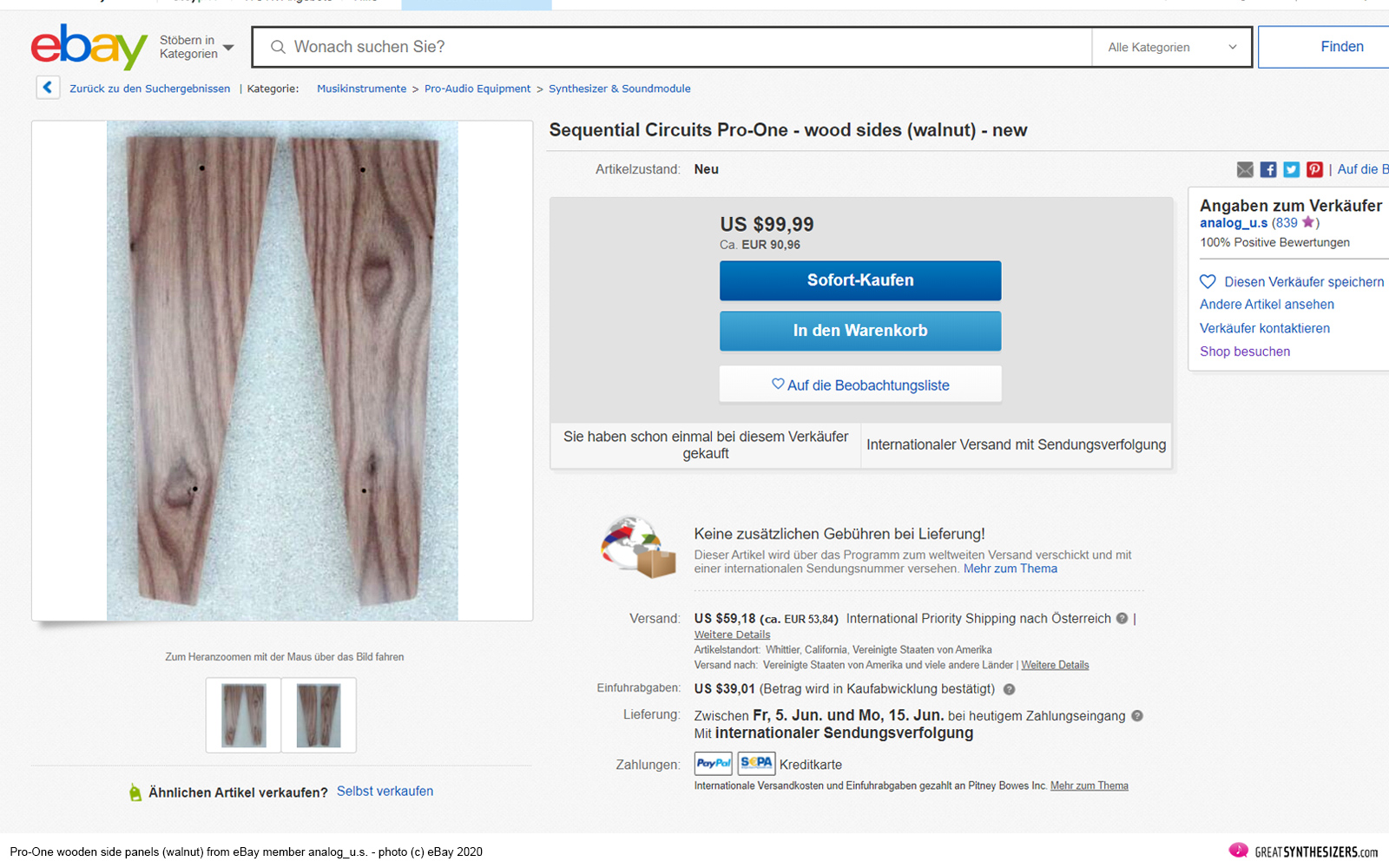
Speaking of side panels, we should also mention GMUSynth Woodworks. As with SynthWood, it is not entirely clear whether the company is still active or not (the “In Stock” area is completely empty, which is generally not a good sign). In any case, contacting GMUSynth should make things clearer. The website also mentions “custom orders”, so … give it a try.
GMUSynth Woordworks impresses with wooden panels of extremely high quality for a variety of instruments (from Arturia DrumBrute to Sequential Pro-One). These are meticulous wooden imitations of the original plastic / wooden parts. As can be seen from the example of a Moog Phatty, there is a lot of detail in these panels. They are not just wooden side panels, but wooden side panels for exactly this (or that) instrument.
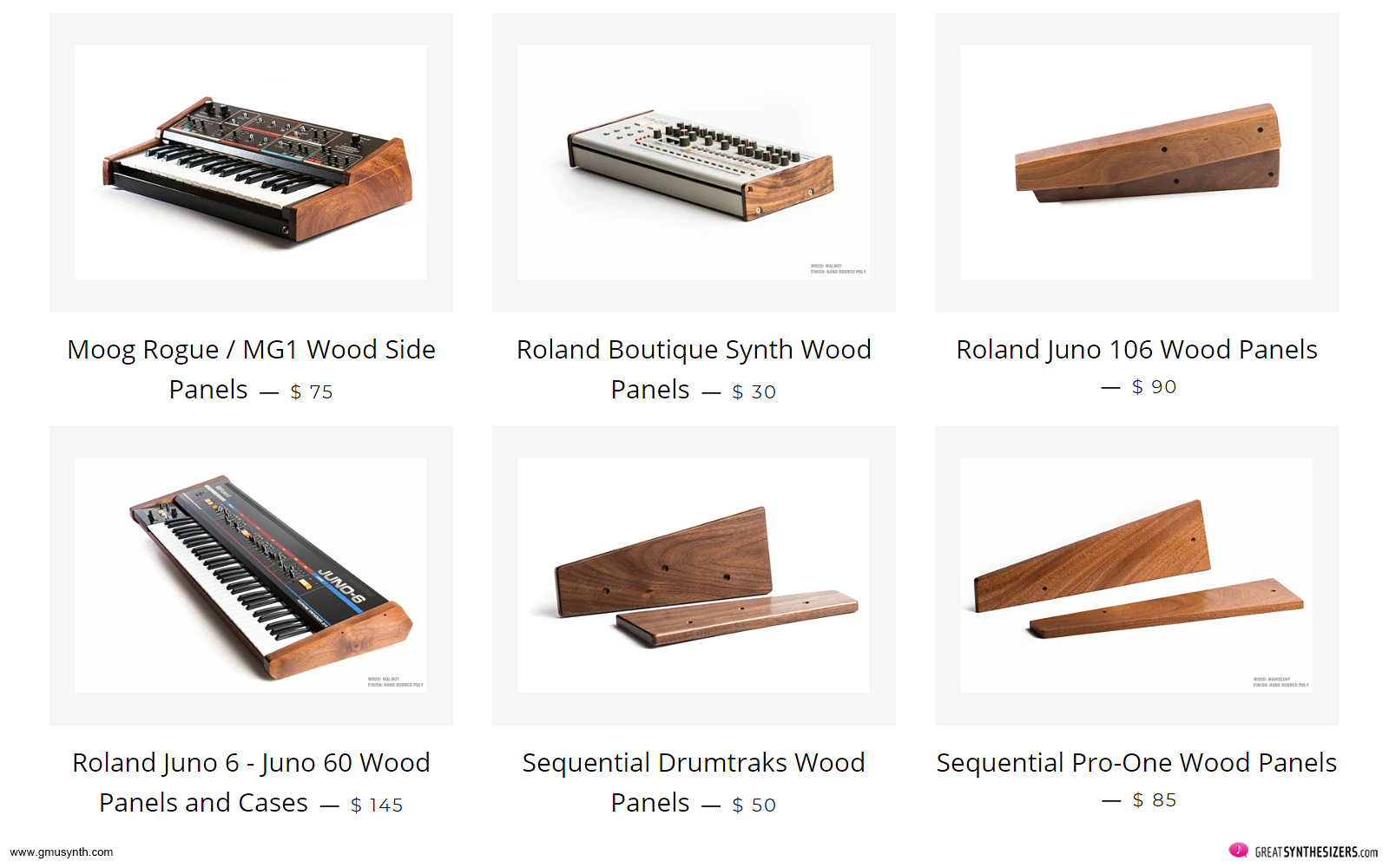
Part 3 of the upgrade trilogy will deal with wooden side panels available in Europe, with the possibility of a new CPU (sequencer with 256 steps and non-volatile memory), with various MIDI retrofits, and with a sort of stabilization of the The Pro-One pots and rear sockets …
Sequential Pro-One –
modifications and upgrades (part 2)
Keyboard Upgrade
Knob Caps Upgrade
Name Plates Upgrade
Wooden Side Panels Upgrade
Links:
Sequential Pro-One – modifications and upgrades (part 1)
Sequential Pro-One – modifications and upgrades (part 2)
Sequential Pro-One – modifications and upgrades (part 3)
